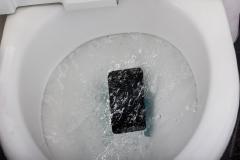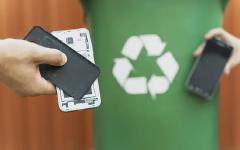Categories
The ultimate guide to recycling e-waste
6 minute read
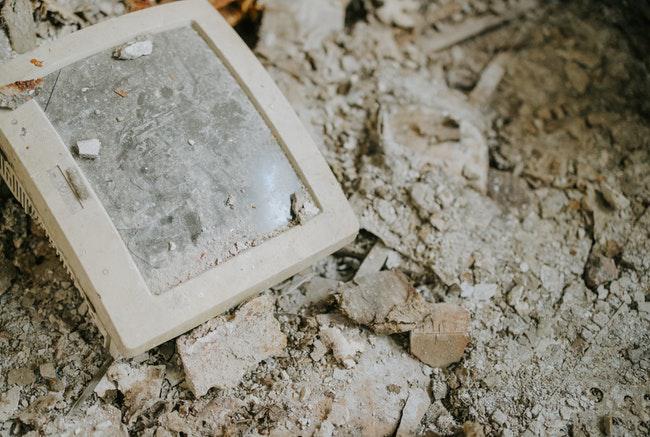
Worldwide, we generate about 50 million tons of e-waste each year. That’s around 1,000 laptops going to landfill every second. Which is a scary thought.
But the problem isn’t that we don’t want to recycle our e-waste. Many of us just don’t know how.
That’s why we’ve created the ultimate guide to recycling your e-waste, covering everything from your mobile phone to your fridge. The power is in your hands.
What is e-waste?
Any electrical item that’s broken or discarded is classed as electronic waste, or ‘e-waste’. This includes everything from batteries and bulbs, to toasters, TVs and washing machines.
The embarrassing bit is that the UK is actually one of the worst countries for electrical recycling.
According to data compiled from the Global E-Waste Statistics Partnership and household compositions data from the United Nations, the UK is the second biggest culprit for e-waste in the EU, with each household generating 55kg of e-waste every year.
Sources:
Norwegian households are the worst, producing 57kg annually. Meanwhile, at the other end of the scale, Moldova only produces 11.6kg per household each year.
Yikes. Time to get on board the recycling train if we want to beat stats like that.
How to recycle household electronics
Alright, let’s get down to it. Here’s how to recycle everything (yes, everything) electronic in your household.
Recycling dead batteries
Batteries don’t belong in your general waste bin. Even those little flat batteries contain hazardous chemicals like lead, cadmium, zinc, lithium and mercury.
When the batteries begin to rot away in landfill, these chemicals can leak out and can cause soil and water pollution. That’s bad news for the planet.
Some UK councils offer battery recycling, but if yours doesn’t you may be able to find a battery recycling container at your local supermarket or electronics store.
Or even better, why not make the switch to rechargeable batteries? That way you can charge them up and reuse them, instead of constantly buying and throwing batteries away.
Recycling light bulbs

Buckle up, this gets a little complicated. There are many different types of lightbulb, but only some are recyclable. This means there’s different rules for different types of bulb.
- Standard (incandescent) bulbs: incandescent bulbs don’t contain any toxic materials. However, they also can’t be recycled. The only way to dispose of standard bulbs is in your general waste bin, but be sure to wrap them up to save your bin-men from broken glass.
- Halogen bulbs: though many people think halogen light bulbs are better for the environment than standard bulbs, they’re not much better. While they don’t contain any toxic materials, they also can’t be recycled (yet). Straight to the bin for these.
- LED bulbs: LEDs are long-lasting and more energy efficient than standard bulbs. Plus, all their materials can be recycled, even broken Christmas tree lights. They don’t contain any toxic materials, so you can take these straight to your local recycling centre for disposal.
- Compact Fluorescent Lamps: energy-saving Compact Fluorescent Lamps (CFL) contain tiny amounts of mercury. This means it’s essential that you don’t throw them in the bin, but take them to your local recycling centre where they can be properly recycled.
- Fluorescent tubes: just like CFLs, fluorescent tube strip lights are recyclable but also contain mercury, so it’s super important that you dispose of them properly. Your local recycling centre will know what to do.
Find your local recycling centre to dispose of your lightbulbs the right way.
Recycling chargers, wires and cables
Cables and leads are packed with precious materials. Copper, aluminium and even gold are used in some wiring, and can all be turned into new products if they go through proper recycling.
You can find your nearest recycling centre through Recycle Your Electricals.org. Or, why not ask at your local electronics store? Lots of shops now offer free in-store recycling to save you time and hassle.
But wait, recycling isn’t the only eco-friendly way to pass off your cables. If you’ve got leads or chargers that are still in full working condition, you could try selling them on eBay, Gumtree, or at a car boot sale. You’d be surprised how quickly they go.
Some charities will also accept chargers for resale.
Recycling mobile phones
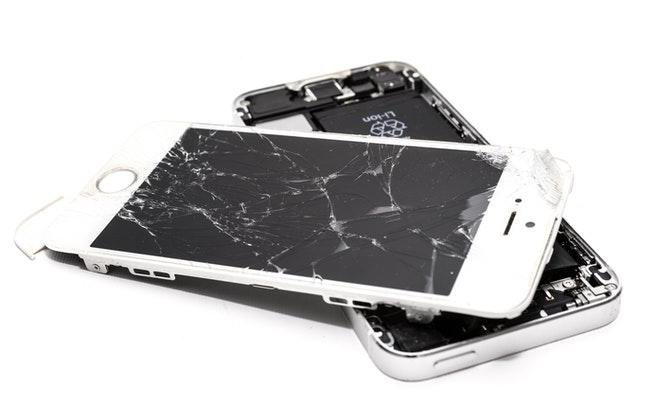
Mobile phones are particularly hard to recycle. That’s because your phone battery is stuffed with toxic chemicals such as carbon, mercury and lithium cobalt oxide. However, they also contain lots of valuable metals including gold, silver, copper, platinum and palladium.
This boils down to two things:
- Your old phone left in landfill is bad for the planet
- It has the potential to be turned into something just as valuable if you can recycle the metals
Unfortunately, because phones are so tricky to pull apart, you can’t just take it to a general recycling centre. However, the good news is that giffgaff has made it easier than ever to recycle your phone.
All you have to do is give us a few details and stick your handset in the post box. We’ll even give you a little cash for your trouble.
Find out how much you could get for your old mobile through giffgaff recycle.
Recycling household appliances
In general, anything with a plug, battery or cable can be recycled. Yes, really. That’s your bedside light, hair straighteners, microwave, iron, hoover, dishwasher, fridge. Need I go on?
There’s three different ways you can get rid of your old or disused appliances:
Take it to your local recycling centre
If you’ve got a car, the quickest way to get rid of your old electronics is to take them to your local recycling centre. Pack everything into the car and be sure to check the opening hours before you set off.
You can find your nearest recycle centre with this handy recycling locator.
Arrange a collection
If you can’t get to a recycling centre yourself, most councils now offer a kerbside pickup service for a small fee. This can help you get rid of larger appliances such as washing machines and fridges.
Depending on where you live, you could also use AO’s Collect & Recycle service. This might be quicker and cheaper for some, so definitely worth checking out.
It’s also good to remember that lots of retailers will collect your old appliance when delivering a replacement. Argos, Ikea and John Lewis all offer this service for an added fee.
Donate, repair or sell
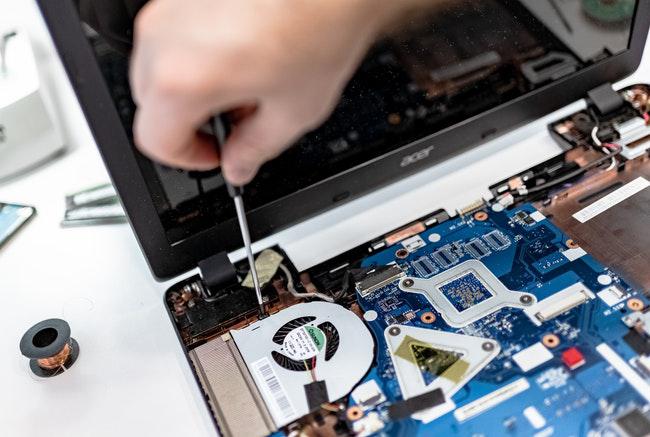
Got a large appliance that’s still usable? Some charity shops would welcome donations of your white goods, and many even offer collection services.
You could also try selling working appliances second-hand online.
Alternatively, if your item has stopped working, it might be worth getting a quote for repair before writing it off. A quick fix might be all it needs to get back up and running. Plus, this will likely be cheaper than buying a replacement.
Spread the word
Knowledge is power. Share these tips far and wide to help us educate more people on how to recycle their e-waste properly. Together we can be more green.
Join the conversation on the giffgaff community forum.

